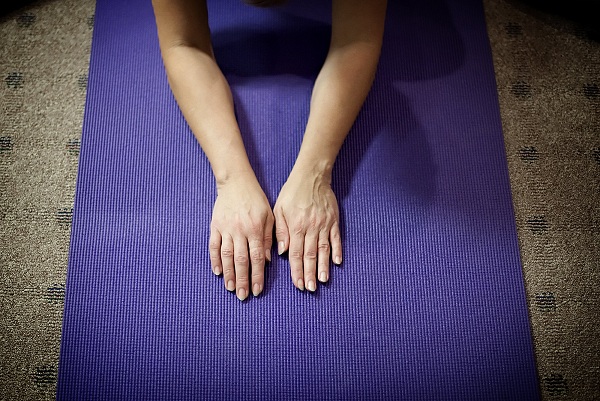When I ask people who just started practising yoga what the mat serves for, their answers are always so funny: “not to lay on the filthy floor” , “so my butt doesn’t hurt from sitting on a solid surface” and similar answers that are logical, but not the main point of owning a yoga mat. But it’s okay, I don’t get upset about it; most of the people who think like this about the yoga mat are beginners in the world of yoga and meditation, so this can only count as a thing to laugh at later. However, it would be good to be familiarized with some basic facts before you decide to buy a yoga mat. 
The yoga mat definitely doesn’t serve just for practical reasons as not to sit on the floor, or so you don’t get filthy; there is an entire philosophy behind it. For starters, it defines your personal training space – no one can enter it since no one is allowed to step on your mat. Therefore, you have your own space for performing every pose and movement you want.
Besides its spacial dimension, the yoga mat plays a huge role in controlling stickiness. Stickiness is among the basic features of the mat and there are a few things to be considered when you buy a yoga mat. First of all, a mat that sticks well to the floor is the number one thing to look for because if it doesn’t offer stability, you can easily throw it away – it’ll be useless. However, there’s another aspect to stickiness known as isometric contraction: when you do poses in a standing position and start to sweat (even a little), you try to prevent your hands and feet from sliding away from each other. This can result not just in an unsuccessful yoga training, but also in severe injuries (if you’re inexperienced and don’t have enough strength in your upper and lower body).
Now, some experts connect this issue with the high level of flexibility, claiming that flexibility is more of a liability in yoga than an advantage. However, other experts think that the root of the problem is more likely in the mat, rather than in flexibility. Although the mat should stick well to the floor, it shouldn’t be sticky to the hands and feet; it creates too much stability for the body which prevents you from performing well. When it comes to good yoga, a little body instability is always needed so there can be a balance between strength and flexibility.
Finally, how does an experienced yogi see their yoga mat?
It’s as simple as this: it defines your personal space. You can buy a yoga mat that best expresses your character and personality through choosing your preferred colour, or one with a pattern or a picture on it, it really is up to you to manage the stylish aspect of the mat. But what it really serves for, is separating you and your physical and spiritual space from the surrounding environment.


